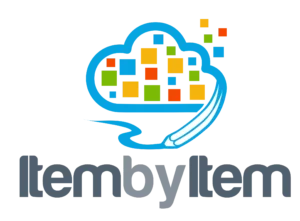The Problem: Training Is Always Left Until the Last Minute
Everyone agrees that training is important. Yet, time and time again, organizations push it to the very end of a project—just before go-live—when users are already overwhelmed, deadlines are tight, and pressure is at its highest. The result? Poor adoption, frustrated employees, and increased mistakes.
Training should not be an afterthought. It needs to be a structured, phased approach that starts even before the project kicks off and continues long after implementation. When planned correctly, training ensures a smooth transition, increases confidence, and drives long-term success.
The Right Timing: Training at Every Stage of the Project
1. Pre-Project Training: Educate the Project Team
Before implementation begins, the project team—including key stakeholders, business analysts, and subject matter experts—must understand the purpose, scope, and goals of the project. This phase is crucial for setting expectations and aligning teams. Training at this stage should focus on:
- Business process changes and their impact
- High-level system capabilities
- Change management strategies
- Best practices from similar implementations
This ensures that the people leading the project are well-equipped to make informed decisions and guide the rest of the organization.
2. During the Project: Train Early Adopters and Champions
As development and configuration progress, training should begin for early adopters and power users. These individuals will serve as internal champions who can help guide others and provide feedback on system usability. Training here should include:
- Hands-on practice with test environments
- Role-specific workflows
- Feedback sessions to refine the training program
This early engagement helps fine-tune training materials and ensures that internal champions are prepared to support end users when the system rolls out.
3. Before Go-Live: Train End Users Gradually
Most organizations make the mistake of cramming all end-user training into a short window right before go-live. Instead, training should be introduced in waves leading up to launch. This phased approach allows users to absorb information and practice before they are expected to perform in a live environment.
Key strategies include:
- Micro-learning modules for quick, digestible lessons
- Simulated exercises for hands-on experience
- Role-based training tailored to each user’s tasks
By spacing out training, employees gain confidence and feel prepared rather than overwhelmed when the new system goes live.
4. Post-Go-Live: Continuous Training for Long-Term Success
Training doesn’t stop at go-live. In fact, some of the most critical learning happens after users start working with the system in real-world scenarios. Post-go-live training should include:
- On-demand resources and knowledge bases
- Office hours and Q&A sessions
- Advanced training for optimizing workflows
Additionally, as new employees join, they need structured onboarding training to ensure they can get up to speed quickly without disrupting operations.
Why Training Must Be a Conscious, Planned Effort
Leaving training until the last minute leads to rushed sessions, disengaged users, and costly mistakes. Instead, organizations must treat training as an integral part of the project, with dedicated planning, phased implementation, and continuous support.
A well-designed training program:
- Ensures employees are prepared and confident
- Reduces resistance to change
- Increases efficiency and adoption
- Lowers support and troubleshooting costs post-implementation
Conclusion: Stop Treating Training as an Afterthought
Training should not be a box to check off at the end of a project. It should be a core part of the implementation plan from day one. By starting early, engaging the right people at the right time, and maintaining ongoing training after go-live, organizations can ensure lasting success.
If your company is about to launch a new system or process, don’t wait—start planning your training now. The sooner you invest in user education, the smoother your rollout will be.



